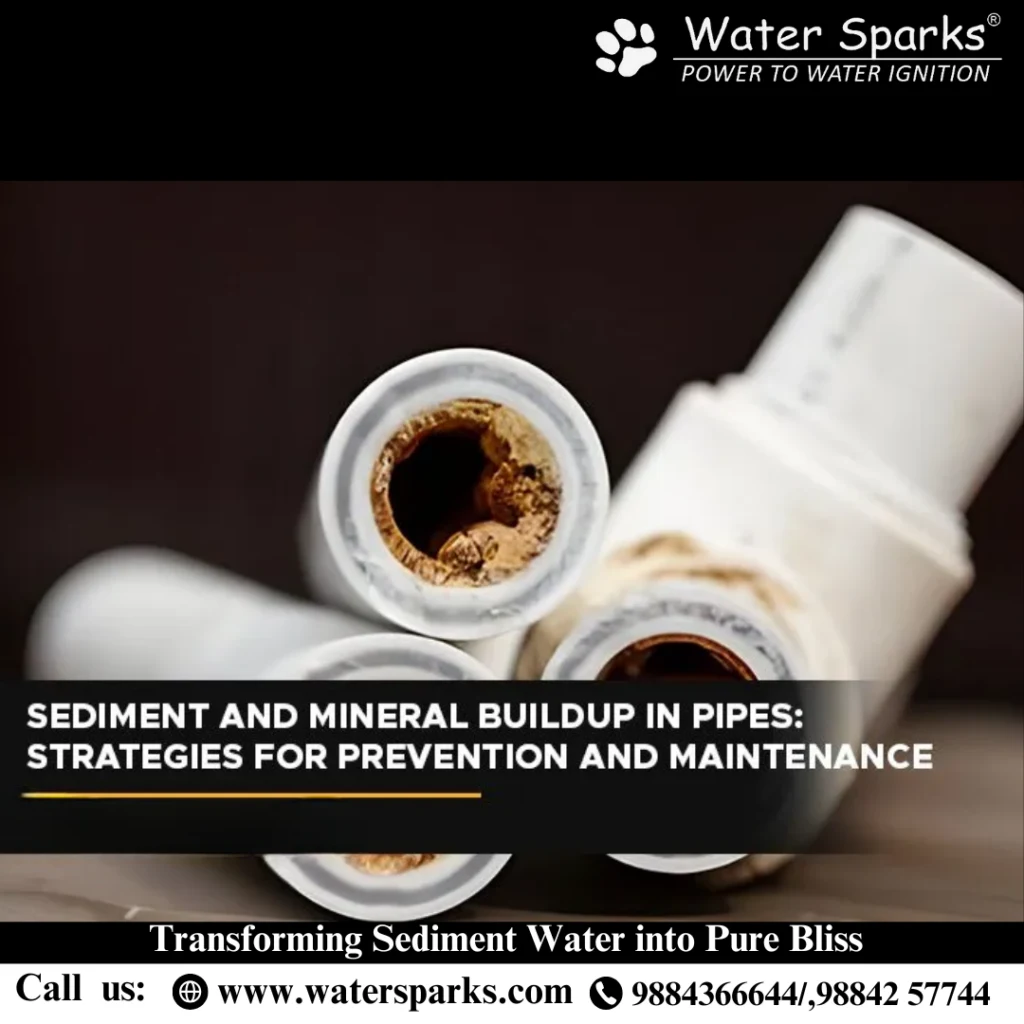Sediment in water is a significant environmental challenge that can affect water quality, ecosystems, and human health. Sediment consists of particles like soil, sand, organic matter, and debris, which can be carried into water bodies through natural and human-induced processes. This sediment can cloud water, reduce its clarity, and carry harmful substances like heavy metals, bacteria, and chemicals that pose risks to aquatic life and water users

Causes of Sediment in Water
Sediment enters water bodies through a variety of natural and anthropogenic (human-caused) sources:
Rainfall and Runoff: One of the primary contributors to sediment in water is rainfall. During heavy rainfall events, water runs over the land, picking up loose soil, sand, and debris. These particles can then be carried into rivers, lakes, and streams, leading to water turbidity. The severity of this issue increases when the ground is already bare or compacted, preventing proper absorption of water and causing soil to be more easily eroded.
Agricultural Activities: Agricultural practices, especially those involving tilling and the use of fertilizers and pesticides, contribute significantly to sedimentation. When fields are plowed or treated with chemicals, the soil becomes more vulnerable to erosion. Runoff from these farms often carries sediment and chemicals into nearby water bodies, leading to pollution and increased sediment load.
Deforestation: The removal of trees and vegetation can lead to soil erosion, as the root systems of trees and plants, which normally help bind the soil, are removed. Without this natural barrier, the soil is more prone to being washed away during rainstorms. In regions where deforestation is rampant, sedimentation can become a severe problem, particularly for nearby rivers and lakes.
Urbanization and Construction: In urban areas, the construction of roads, buildings, and infrastructure disrupts the land, increasing the amount of exposed soil. Stormwater runoff from these areas often carries sediment into water bodies. Moreover, construction sites can contribute to massive amounts of sediment that flow into streams and rivers if proper erosion control measures are not implemented.
Impacts of Sediment on Water Quality
Sediment in water bodies can have far-reaching consequences:
Water Clarity and Turbidity: Excessive sediment reduces water clarity, making it cloudy or muddy. This affects aquatic ecosystems as it decreases the amount of sunlight that can penetrate the water, hindering the growth of aquatic plants and disrupting the food chain.
Pollutant Transport: Sediment acts as a carrier for harmful chemicals, including pesticides, heavy metals, and bacteria. When sediment enters water bodies, it often brings these pollutants along. This can lead to contamination of drinking water, affect aquatic species, and disrupt the ecosystem.
Aquatic Habitat Disruption: Sediment accumulation can smother aquatic habitats, particularly on the beds of rivers and lakes, disrupting the organisms that rely on clear water. Fish may struggle to find food or oxygen, and the reproduction cycles of certain species can be affected.
Economic Impact: Sediment can lead to the clogging of water intake systems, affecting water supply for irrigation, drinking, and industrial use. In addition, it can increase the costs of water treatment as more resources are needed to remove sediment from water before it is safe for use.
Solutions for Sediment Removal
Addressing sediment in water requires a combination of preventive and corrective measures. Solutions like sediment filtration systems and broader erosion control strategies are critical to mitigating the effects of sediment pollution.
Sediment Filtration Systems: One of the most effective ways to remove sediment from water is through filtration systems. These systems are designed to trap suspended particles, preventing them from contaminating water sources. “Water Sparks” is an example of an innovative sediment filtration solution, designed to treat water efficiently by removing sediment and other particles that cause turbidity. Water Spark’s sediment removal technology can effectively clear water, making it safe for consumption and other uses. These systems can be installed in various settings, from industrial operations to community water systems, ensuring a cleaner water supply.
Conclusion
Sediment pollution is a pervasive issue that affects water quality, aquatic ecosystems, and human health. From agriculture and urban development to natural processes like rainfall, the sources of sediment are varied and widespread. However, with solutions such as sediment filtration systems and effective erosion control strategies, the negative impacts of sedimentation can be mitigated. Tools like Water Sparks play a crucial role in filtering sediment and making water safer for consumption, ensuring that the challenges posed by sediment are addressed in an innovative and effective manner. Through a combination of technological solutions and public awareness, the harmful effects of sediment can be reduced, leading to cleaner, healthier water for all.
